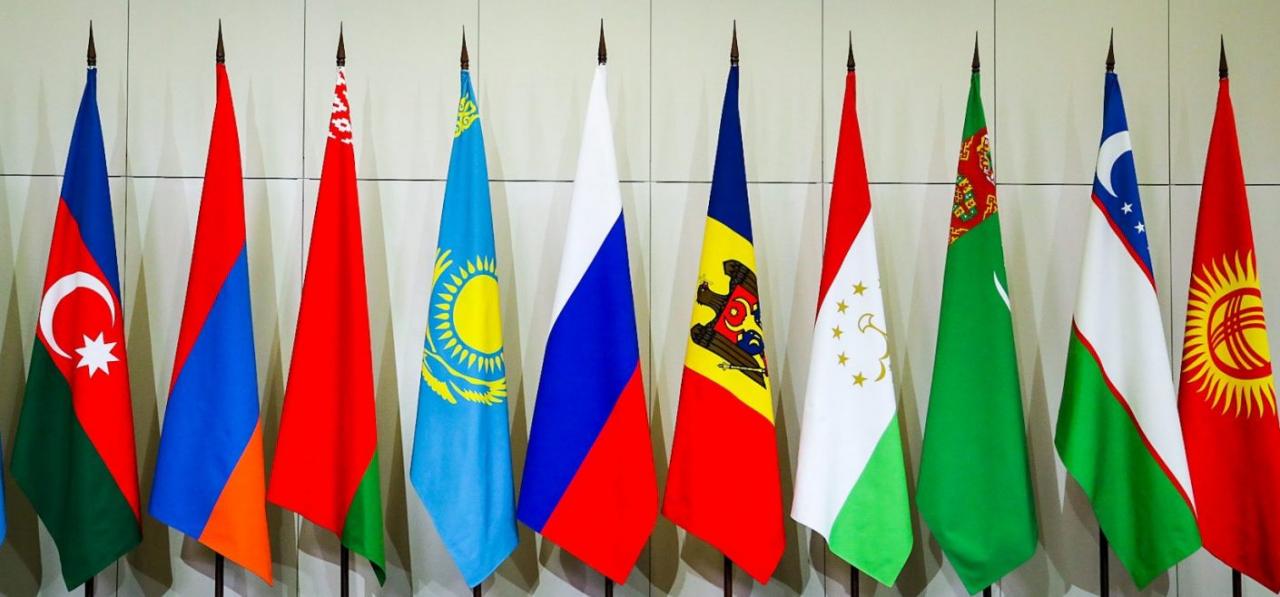

MODERN CONDITION AND DEVELOPMENT PROSPECTS OF THE EURASIAN ECONOMIC UNION
- 14 мая 2021 г.
- 1805
- 0

MODERN CONDITION AND DEVELOPMENT PROSPECTS OF THE EURASIAN ECONOMIC UNION
Safiyanov Denis Rinatovich
e-mail: el_altay2025@mail.ru
Abstract: The purpose of this scientific article is to present the current state and determine the trends and prospects for the development of the Eurasian Economic Union in the short term. The promising directions for the development of the EAEU are: the formation of a full-fledged economic union without barriers, with a minimum number of exemptions and restrictions; transformation of the Union into a territory for scientific and technological development and innovation; increasing the authority of the EAEU in the world arena; strengthening its international legal personality and a number of other areas of Eurasian integration. All these measures are aimed at strengthening the internal factors of the EAEU development. Each of these measures provides for many specific actions aimed at increasing the efficiency of the integration interaction of the member states of the Union. The study of this integration association, as a subject of the world economy and related processes, is relevant and demanded by the Eurasian society.
Key words: Eurasian Economic Union, EAEU, integration, digital economy, econometric model, investment potential, international cooperation, free trade, transit transport hub.
As a result of long-term and systematic cooperation, on May 29, 2014, the Republic of Belarus, the Republic of Kazakhstan and the Russian Federation signed an Agreement on the establishment of the Eurasian Economic Union from January 1, 2015. The Eurasian Economic Union (EAEU) is an international organization for regional economic integration, created in the interests of improving the living standards of the member states, which has international legal personality [1]. The Treaty on the Eurasian Economic Union is the main regulatory and legal document [2]. The main goals of the EAEU are: creating conditions for the stable development of the economies of the member states in order to improve the living standards of their population; striving to form a single market for goods, services, capital and labor resources within the EAEU; comprehensive modernization, cooperation and increasing the competitiveness of national economies in the global economy. Currently, the EAEU includes five countries: the Republic of Armenia, the Republic of Belarus, the Republic of Kazakhstan, the Republic of Kyrgyzstan and the Russian Federation. Observers are three countries: the Republic of Uzbekistan, the Republic of Cuba, the Republic of Moldova [3].
More than 50 countries are ready to cooperate with the Eurasian Economic Union (EAEU), interaction with the EAEU takes place in two different forms. The first is the signing of agreements on the creation of free trade zones (FTZ). Thus, the EEC is negotiating the creation of an FTA with several countries, including Azerbaijan, Afghanistan, Iran, Serbia, Singapore, Turkmenistan, Turkey, Israel, India, Pakistan, China, Vietnam, Mongolia, Malaysia. The second form of interaction is memorandums of cooperation. More than 50 countries are currently ready to work with the EAEU, many of which are ready to sign agreements on the creation of an FTA. Today the presence of the EAEU is being formed in the economy and foreign trade of Africa, Latin America and the Caribbean region. For the next five years, the task is formulated in such a way that the EAEU will deepen integration and remove all barriers. Despite the current crisis in modern Russian-European relations, there is an objective foundation for the mutual interest of the EU and the EAEU in integration interaction. On December 11, 2020, the heads of states of the Eurasian Economic Union approved the strategic directions for the development of Eurasian economic integration until 2025. The Commission was instructed, together with the parties, to work out the issue of pricing tariffs for gas transportation services in the common gas market of the EAEU within the framework of the International Treaty on the Formation of a Common Gas Market of the Eurasian Economic Union, which is to be developed in 2021.
In 2020, 12 barriers and 3 obstacles with signs of barriers were removed in the internal market of the Eurasian Economic Union, and in the current one - 2 more barriers. For comparison: this is almost a third of the total amount since 2016. Moreover, a lot of work has been done on exemptions and restrictions. So, thanks to the amendments made to the acts of the Union, it was possible to remove the exemption, which created unequal taxation of Union goods when they were placed under the customs procedure of the free customs zone in the territories of the Kaliningrad and Magadan free economic zones of Russia in comparison with foreign goods.
Here we are talking about the same conditions for levying VAT in such FEZs with the provision of a deferral for its payment for the goods of the Union. In addition, two exemptions in the provision of industrial subsidies have been eliminated, since in 2020 the term for their application, enshrined in the Treaty, expired. This refers to measures in relation to investment agreements for industrial assembly in the Republic of Belarus and in the Republic of Kazakhstan. From the "Roadmap" for the elimination of exemptions and restrictions for 2018-2019. through the mechanism of separate international treaties, it was possible to eliminate such a limitation as the lack of uniform requirements for the movement of seeds of agricultural plants in the Union. In addition to eliminating problematic issues, various mechanisms involving the use of digital technologies are of particular relevance for the development of mutual trade of the EAEU countries [4].
Digitalization of processes makes it possible to speed up and simplify the movement of goods. An important step in the formation and development of the EAEU is the digitalization of the economies of the member states. In this regard, on October 11, 2017, the heads of the EAEU member states approved the Main Directions for the Implementation of the Digital Agenda until 2025. For the purposes of implementing the Digital Agenda, an Integrated Information System (IIS) was created. The system is designed for the rapid interstate exchange of data and electronic documents within the EAEU, the creation of common information resources for the member states, the implementation of common processes, as well as ensuring the activities of the EAEU bodies.
The active implementation of digitalization in the activities of customs administrations simplifies relations for foreign economic activity participants with customs representatives, minimizes subjectivity in decision-making, and for customs authorities, increases the transparency and efficiency of control over the movement of goods. The development of the Integrated System will provide new opportunities for the formation of digital platforms using common data models and a unified system of regulatory and reference information of the EAEU [5]. In this regard, on August 9, 2019, the Concept of Cross-Border Information Interaction was adopted [6]. This Concept defines general approaches to organizing information interaction between legal entities (business entities) of the EAEU member states between themselves and with authorized bodies. In this regard, it is especially worth noting the creation of a network of electronic customs and electronic declaration centers (ECD) in Russia. In 2023, the Federal Customs Service will complete a full-scale project to create a unified network of electronic customs and CED in Russia. Today, within the framework of the EAEU, there is one electronic trading platform in the Republic of Kazakhstan, two in the Republic of Belarus, and five in the Russian Federation. Suppliers of the member states of the Eurasian Union gained access to public procurement markets, including through the cross-border use of electronic digital signatures, cancellation of exemptions from the national regime or elimination of violations when establishing such exemptions. The creation of a unified electronic customs and a CED system throughout the EAEU will allow the use of technologies for automatic registration and automatic release, and this, in turn, will become. in turn will become a critical factor for increasing trade and strengthening control, through traceability, along the entire route of movement of goods. The volume of mutual trade in goods between the member states of the Eurasian Economic Union in January-February 2021 amounted to $ 9 billion, or 106.8% of the level of January-February 2020. In the commodity structure of mutual trade, the largest share is occupied by mineral products (26.1 % of the volume). Supplies of machinery, equipment and vehicles account for 18.2%, food products and agricultural raw materials - 17%, metals and products from them - 13.3%, chemical products - 11.4%. Compared to January-February 2020, the share of mutual trade in the total volume of EAEU foreign trade increased from 13.8% to 14.9%. On December 11, 2020, the Heads of State of the Eurasian Economic Union at a meeting of the Supreme Eurasian Economic Council approved the Strategic Directions for the Development of Eurasian Economic Integration until 2025. In the long term, the EAEU is a common drug market, an electric power market, a common gas and oil market. In 2020, the Eurasian Economic Commission was instructed, together with the parties, to work out the issue of pricing and tariffs for gas transportation services in the common gas market of the EAEU within the framework of the International Treaty on the Formation of a Common Gas Market of the Eurasian Economic Union, which is to be developed in 2021. The Council of the Eurasian Economic Commission was instructed to approve the action plan for the implementation of the Strategic Directions in the first quarter of 2021, the governments of the member states and the EEC - to ensure the implementation of the document.
The list of measures and mechanisms (about 330 items) is actually a "road map" for the further development of integration. The document defines the mechanisms of cooperation in new areas not provided for by the Treaty on the EAEU: education, tourism, sports and healthcare. The aggregate GDP of the EAEU countries in the total world GDP is small - about 3.7%, but the potential that is laid down in the union agreement of 2014 may allow to significantly increase this volume. Now the EEC is preparing a plan for the implementation of the strategy, which will allow increasing import substitution by 10-12% and increasing non-raw materials exports to third countries by 22-25%. According to the strategy, product traceability will be ensured on the territory of the EAEU. Integration of information systems of the EAEU member states will also become an important element - first of all, in the field of customs administration and phytosanitary control. Integration of systems in the field of tax administration is also discussed. The list of measures and mechanisms is actually a "roadmap" for the further development of the integration of the EAEU states, its implementation provides for the development and signing of 13 international treaties, more than 60 normative legal acts of the EAEU, the introduction of about 25 amendments and additions to the union agreement, as well as amendments to national legislation the EAEU member states. The strategic directions will be implemented in stages until 2025, while the overall monitoring of their implementation will be carried out by the board of the Eurasian Economic Commission (EEC). Of course, these measures are important and relevant. Another important step for the development of integration processes will be the creation of joint companies [7]. A necessary and important process for the modernization and cooperation of the economies of the EAEU member states is the elimination of withdrawals from the single market. So, for example, from January 1, 2021, pharmaceutical manufacturers of the states that are members of the Eurasian Economic Union will be required to register drugs only according to the rules of the EAEU. The unified system formed in the EAEU in this area will ensure their safety and quality, which creates optimal conditions for the development and competitiveness of the pharmaceutical industry and medical devices produced in the territory of the countries of the Eurasian Economic Union, and their entry to the world market. In 2020, work continues on the formation of a common electric power market of the Eurasian Economic Union, first of all, on the approval of draft rules for the functioning of the OER of the EAEU [8]. After the EEC approved the concept of forming a single electric power market, on May 29, 2019, the Heads of the EAEU states signed an international agreement on the common electric power market of the EAEU. The issue of creating a financial mega-regulator of the EAEU by 2022 is also being worked out - a supranational financial institution responsible for the formation of uniform rules for working in the financial markets of the Union, appropriate regulation and supervision. By 2025, a single market for oil, gas and oil products should emerge. Such a long period is associated with the extreme importance of the oil and gas sector in the formation of national budgets. In addition to the systems of the main markets of the Eurasian Economic Union, the following are also in development: the single market of audit services of the EAEU, the single exchange space of the EAEU, the main directions and stages of the implementation of an agreed transport policy (since 2016), the creation of a unified system of access to state (municipal) purchases in The EAEU, implemented in electronic format (since 2017), the unification of the legislation of the EAEU member states on administrative and criminal liability for violations in the field of competition (since 2018), the single market for excisable products of the EAEU (since 2020), the integrated foreign exchange market of the EAEU ( from 2023), the common financial market (by 2025). Since 2020, the EAEU has been creating a unified system for registering trademarks and appellations of origin.
In 2020, the Board of the Eurasian Economic Commission approved a draft agreement on a unified system for identifying participants in foreign economic activity (FEA) in the Eurasian Economic Union [9]. An important event in the development of industrial policy in accordance with the implementation of the Treaty on the EAEU was the adoption in September 2015 by the heads of government of the main areas of industrial cooperation within the EAEU, they laid the foundation for a new innovative economy by creating conditions for the transition to high-tech industries with high labor productivity and added value ... For this, a list of 19 sectors of the economy, priority for industrial cooperation of the EAEU member states, was approved. The organizations of the EAEU member states have created 9 technological platforms: LEDs, Photonics, Medicine of the Future, Supercomputers, Biotech, Light Industry, Agroindustrial Complex and others. The development of draft concepts for the creation of the Eurasian Engineering Center for Machine Tool Building and the Regulations on the Formation and Operation of Eurasian Technological Platforms, including mechanisms for their financing. The EAEU countries are actively creating joint ventures (hereinafter referred to as JV). More than 5000 Russian - Kazakh joint ventures and more than 2500 Russian - Belarusian joint ventures were created [10]. The Eurasian Economic Commission (EEC) proposed a fiscal reform to reach outstripping economic growth rates, follows from the commission's final report on the macroeconomic situation in the EAEU for 2020. In particular, they are confident in the need to exempt R&D costs from fees and pay extra to companies for innovations in the form of tax bonuses. In addition, the EEC proposed to increase investments in advanced technologies fivefold - from 1% to 5% of GDP. Prioritizing the development of innovations will allow the EAEU to reach an outstripping pace of economic development of 4.5% annually. To date, the EAEU Development Strategy until 2025 provides for the use of the potential of the Eurasian Development Bank, the Eurasian Fund for Stabilization and Development and the Astana International Financial Center. Strategic directions are focused on the formation of a digital space and the expansion of digital infrastructure, first of all, it concerns the customs authorities of the EAEU member states. This is another vector of further expansion of the network of trade relations of the union with third countries, which is especially important given the projected growth of protectionism. In addition, the countries of the Eurasian Economic Union will work over the next five years to create a joint space system, it involves the unification of satellites of the EAEU states and the formation of a single data bank based on the materials of common space imagery, and it also implies the modernization of ground-based systems for receiving and processing information. Thus, the Eurasian Economic Union is one of the largest modern international associations. The EAEU is a very powerful economic, geopolitical and ideological project. Further development of Eurasian integration depends on how successful the real "integration from below" will be - the growth of mutual trade, cross-border investments, civilized labor migration. This requires the creation of uniform “rules of the game” in the EAEU economy. The ultimate goal of the EAEU for the future until 2025 should be to bring the coverage of the common market as close as possible to 100% [11]. Despite the pandemic, the Eurasian Economic Union is working for the future.
BIBLIOGRAPHY
1.Eurasian Economic Union: New Reality - New Opportunities: under total. ed. Gross T. D. - M., 2017 - 168 p. [Evrazijskij e`konomic news soyuz: novaya real`nost` - novy`e vozmozhnosti: pod obshh. red. Valovoj T.D. - M., 2017 - 168 s.]
2.Treaty on the Eurasian Economic Union / Consultant Plus: [website]. URL: http://www.consultant.ru/document/cons_doc_LAW_163855/3149ec5 625c667169c6242f4af82ac99f7c84941 / (date of access: 10.02.2021). [Dogovor o Evrazijskom e`konomicheskom soyuze / Konsul`tant Plyus: [sajt]. URL: http://www.consultant.ru/document/cons_doc_LAW_163855/3149ec5 625c667169c6242f4af82ac99f7c84941 / (data obrashheniya: 10.02.2021g.).]
3.SEEC approved the granting of observer state status to the EAEU to Uzbekistan and Cuba - Eurasian Economic Commission / News and Events / News: [site] URL: http://www.eurasiancommission.org/ ru / nae / news / Pages / 11- 12-2020.aspx (date of access: 14.02.2021). [VEE`S odobril predostavlenie Uzbekistanu i Kube statusa gosudarstva-nablyudatelya pri EAE`S - Evrazijskaya e`konomicheskaya komissiya / Novosti i soby`tiya / Novosti: [sajt] URL: http://www.eurasiancommission.org/ ru / nae / news / Pages / 11-12-2020.aspx (data obrashheniya: 14.02.2021g.).]
4.On the Main Directions for the Implementation of the Digital Agenda of the Eurasian Economic Union until 2025. The electronic text of the document was prepared by Kodeks JSC and verified by: the official website of the Eurasian Economic Union www.eaeunion.org, 10.11.2017. URL: http://docs.cntd.ru/document/555625953 (date of access: 12.02.2021). [Ob Osnovny`x napravleniyax realizacii cifrovoj povestki Evrazijskogo e`konomicheskogo soyuza do 2025 goda. E`lektronny`j tekst dokumenta podgotovlen JSC "Kodeks" i sveren po: oficial`ny`j sajt Evrazijskogo e`konomicheskogo soyuza www.eaeunion.org, 10.11.2017. URL: http://docs.cntd.ru/document/555625953(data obrashheniya: 12.02.2021 g.).]
5.Nazarkova D.V. Prospects for the development of the logistics and customs infrastructure of the EAEU // In the collection: Customs readings - 2019. Science and education in the context of the formation of an innovative economy. Collection of materials of the International Scientific and Practical Conference. Under the general editorship of S.N. Gamidullaeva. 2019. S. 144-148. [Nazarkova D.V. Perspektivy` razvitiya logisticheskoj i tamozhennoj infrastruktury` EAE`S // V sbornike: Tamozhenny`e chteniya - 2019. Nauka i obrazovanie v usloviyax stanovleniya innovacionnoj e`konomiki. Sbornik materialov Mezhdunarodnoj nauchno-prakticheskoj konferencii. Pod obshhej redakciej S.N. Gamidullaeva. 2019. S. 144-148.]
6.Decision of the Eurasian Intergovernmental Council dated 09.08.2019 No. 7 "On the Concept of Cross-Border Information Interaction" // http://docs.cntd.ru/document/560943025. (date of access: 14.02.2021). [Reshenie Evrazijskogo mezhpravitel`stvennogo soveta ot 09.08.2019 No. 7 "O Koncepcii transgranichnogo informacionnogo vzaimodejstviya" // http://docs.cntd.ru/document/560943025. (data obrashheniya: 14.02.2021g.).]
7.The EAEU countries will create joint ventures - Rossiyskaya Gazeta: [site]. URL: https://rg.ru/2021/01/14/strany-eaes-sozdadut-sovmestnye-predpriiatiia.html (date of access: 14.02.2021). [Strany` EAE`S sozdadut sovmestny`e predpriyatiya - Rossijskaya gazeta: [sajt]. URL: https://rg.ru/2021/01/14/strany-eaes-sozdadut-sovmestnye-predpriiatiia.html (data obrashheniya: 14.02.2021g.).]
8.EEC forms a common electricity market - Eurasian Economic Commission / News and events / News: [website]. URL: http://www.eurasiancommission.org/ru/nae/news/Pages/07-04-2020-1.aspx (date accessed: 16.02.2021). [EE`K formiruet obshhij e`lektroe`nergeticheskij ry`nok - Evrazijskaya e`konomicheskaya komissiya / Novosti i soby`tiya / Novosti: [sajt]. URL: http://www.eurasiancommission.org/ru/nae/news/Pages/07-04-2020-1.aspx (data obrashheniya: 16.02.2021g.).]
9.Agreement on a unified system of identification of participants in foreign economic activity within the EAEU was approved - Eurasian Economic Commission / News and Events / News: [site]. URL: http://www.eurasiancommission.org/ ru / nae / news / Pages / 20-01-2020-2.aspx (date accessed: 18.02.2021). [Odobreno Soglashenie o edinoj sisteme identifikacii uchastnikov VE`D v ramkax EAE`S - Evrazijskaya e`konomicheskaya komissiya / Novosti i soby`tiya / Novosti: [sajt]. URL: http://www.eurasiancommission.org/ ru / nae / news / Pages / 20-01-2020-2.aspx (data obrashheniya: 18.02.2021g.).]
10.The Union State of Russia and Belarus: in search of a vector of development Rossiyskaya Gazeta: [site]. URL: https: //rg.ru/2019/12/11/soiuznoe-gosudarstvo-rossii-i-belarusi-v-poiskah-vektora-razvitiia.html (date accessed: 19.02.2021). [Soyuznoe gosudarstvo Rossii i Belarusi: v poiskax vektora razvitiya Rossijskaya gazeta: [sajt]. URL: https: //rg.ru/2019/12/11/soiuznoe-gosudarstvo-rossii-i-belarusi-v-poiskah-vektora-razvitiia.html (data obrashheniya: 19.02.2021g.).]
11. The future of the Eurasian Economic Union: Digital Transformation and Youth // Under the general editorship of the Head of the Analytical Department of the Administration of the Federation Council, Executive Secretary of the Integration Club, Doctor of Economics V.D. Krivova - M., Signed for print on 28.01.2020. Format 60x84 1/16. CONV. print l. 12.79. Circulation 50 copies. Order No. i-6. [ Budushhee Evrazijskogo e`konomicheskogo soyuza: Cifrovaya Transformaciya i Molodezh` // Pod obshhej redakciej nachal`nika Analiticheskogo upravleniya Apparata Soveta Federacii, otvetstvennogo sekretarya Integracionnogo kluba, doktora e`konomicheskix nauk V.D. Krivova – M., Podpisano v pechat` 28.01.2020. Format 60x84 1/16. Usl. pech. l. 12,79. Tirazh 50 e`kz. Zakaz № i-6.]
Опубликовано: Денис Сафиянов
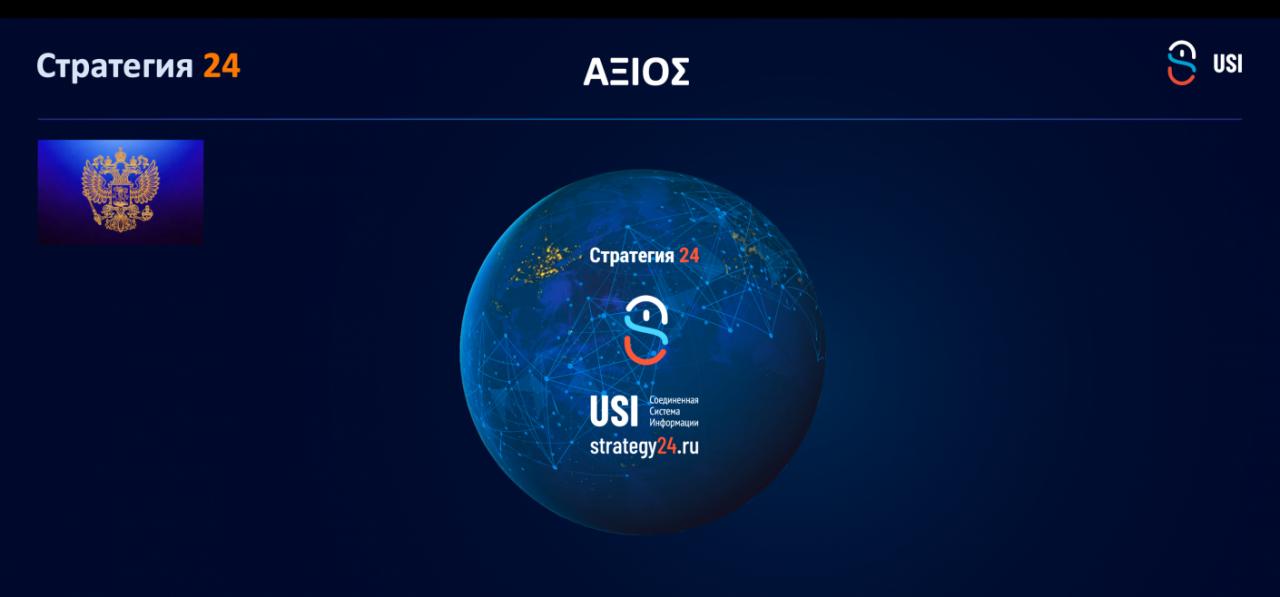
Проект: Дискурсивно-оценочная сеть "СТРАТЕГИЯ 24"
Проект: Учебно-методические мероприятия по исполнению Указа Президента Российской Федерации No 809 от 09 ноября 2022 года

Проект: Значимые реализованные проекты

Проект: Философия нравственного пути человечества
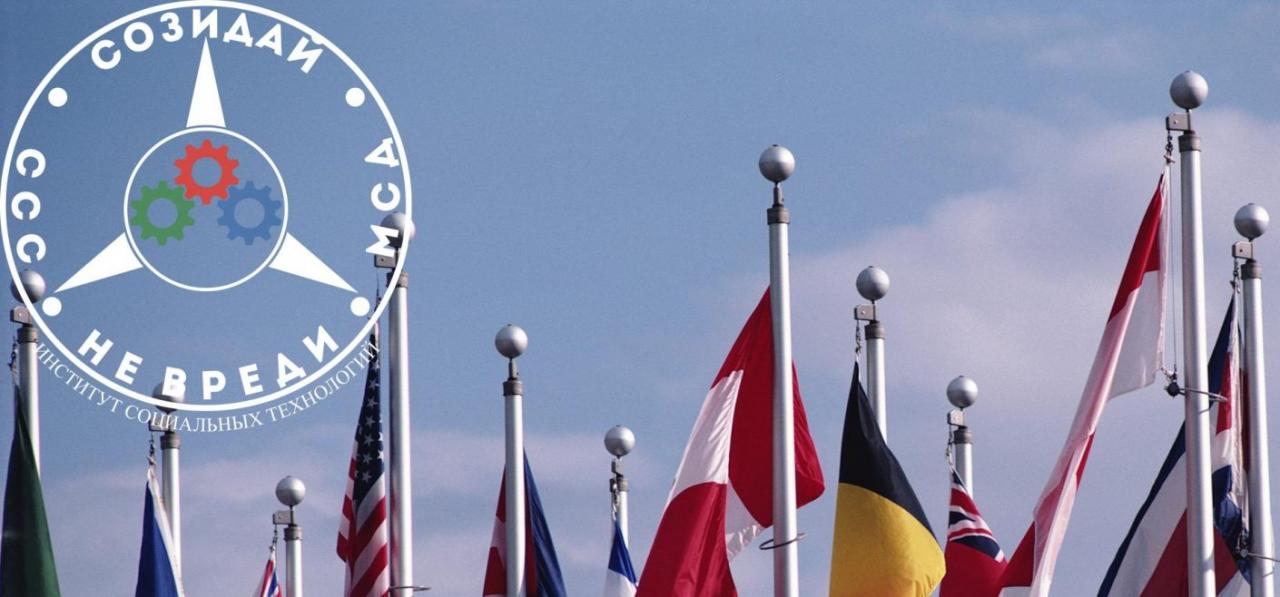
Опрос: ДЕКЛАРАЦИЯ НРАВСТВЕННОГО ПУТИ ЧЕЛОВЕЧЕСТВА
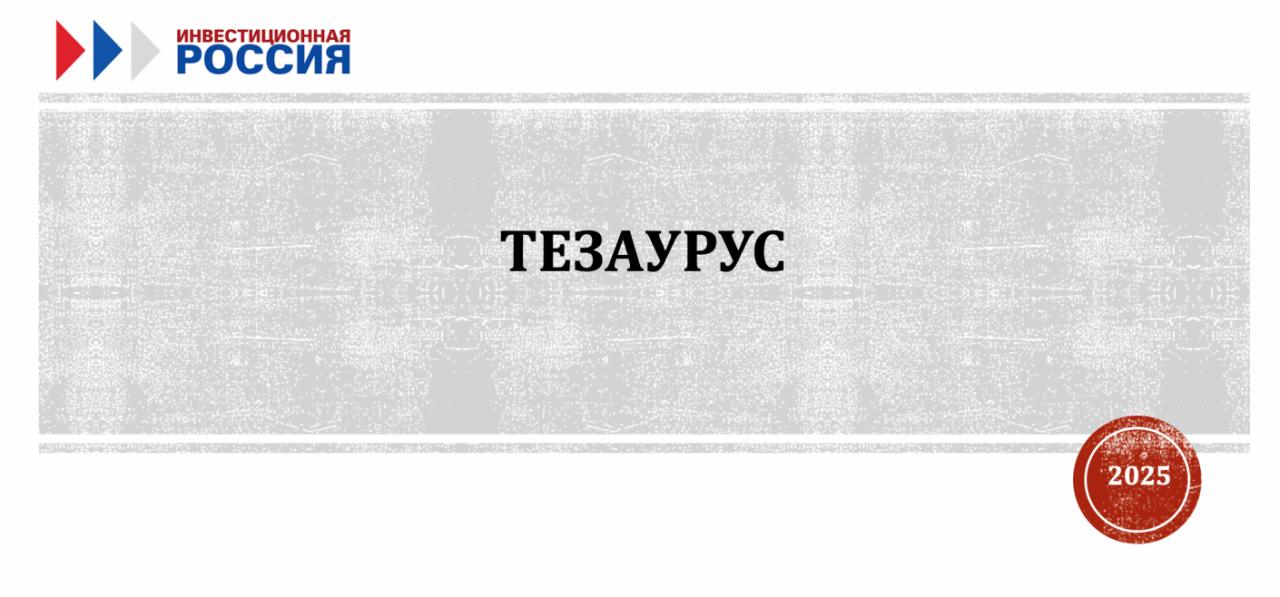
Опрос: ТЕЗАУРУС ИНВЕСТИЦИОННОЙ РОССИИ
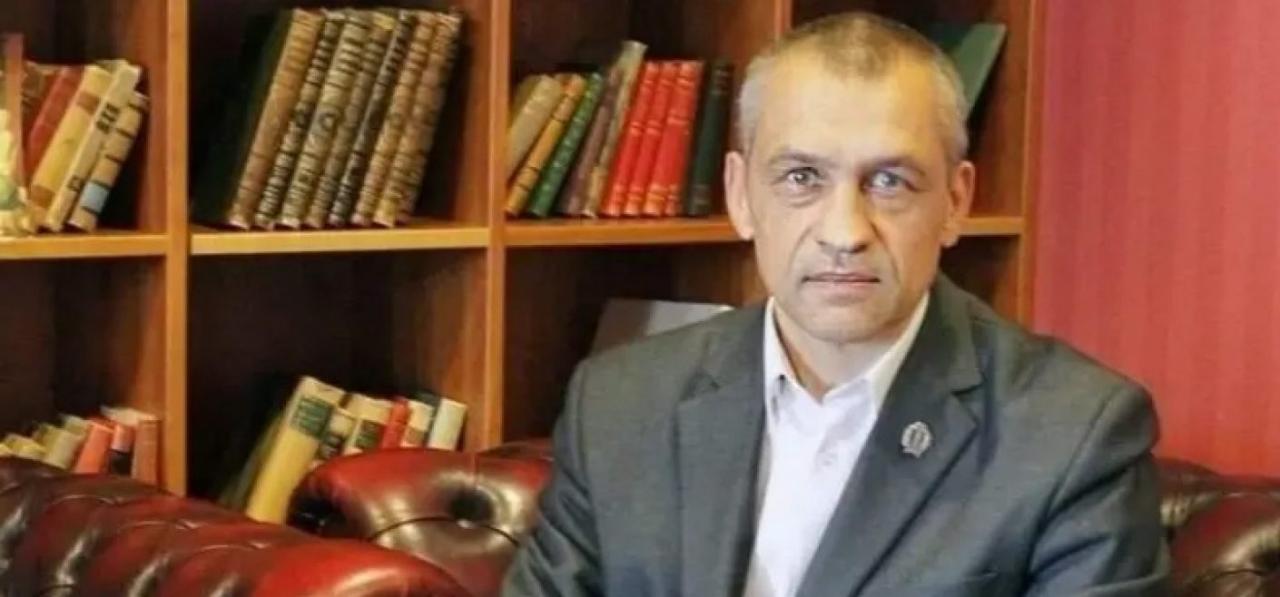
Опрос: ЭКОНОМИЧЕСКИЕ ПРЕСТУПЛЕНИЯ

Инициатива: ГЛОБАЛЬНАЯ ЭТИКА КАК ОСНОВА ГЛОБАЛЬНОГО УПРАВЛЕНИЯ


Комментарии 0